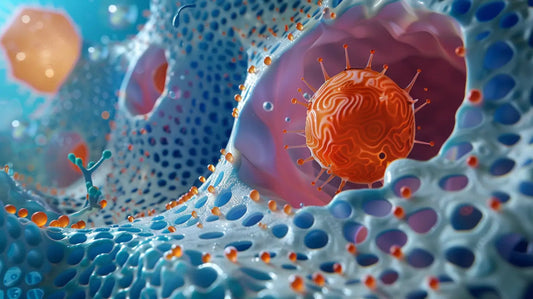How to Clean a Hydrogen Water Bottle with PEM Technology
Updated
John Smith
Staff Writer
Our Commitment to Accuracy and Objectivity
Ocemida is committed to delivering reliable and unbiased information. Our editorial team, comprised of experienced editors and medical experts, meticulously reviews every article and guide to ensure the content is accurate, up-to-date, and free from bias.
Rigorous Fact-Checking Process
To uphold the highest standards of accuracy, we adhere to the following fact-checking guidelines:
Trusted Sources: We only cite reputable sources, such as peer-reviewed journals, government reports, academic and medical associations, and interviews with credentialed healthcare professionals.
Evidence-Based: All scientific claims and data are supported by at least one credible source. Each article includes a comprehensive bibliography with full citations and links to the original sources.
Internal Linking: While we may include internal links to other relevant Ocemida pages for better navigation, these links are never used as primary sources for scientific information.
Expert Review: A member of our medical and scientific expert team provides a final review of the content and cited sources for all articles and product reviews related to medical and health topics.
By following these rigorous standards, Ocemida strives to provide readers with reliable and informative content.
Share with a friend
Key Takeaways
🟢 Proper PEM (Proton Exchange Membrane) cleaning is essential - use distilled water for regular flushing and avoid household cleaners like vinegar or lemon juice, as they can damage the membrane.
🟢 Never drink directly from the bottle due to the "backwash phenomenon" - saliva contains bacteria that can contaminate the water and potentially cause illness. Use a separate cup or bottle with a built-in straw instead.
🟢 For long-term maintenance: use filtered water to prevent mineral buildup, clean monthly, and ensure the device is completely dry before storage. For deep cleaning, use specialized solutions like Ocemida following the manufacturer's instructions.
Hydrogen water generators are revolutionizing the way we consume water by infusing it with molecular hydrogen. A key component of these generators is the Proton Exchange Membrane (PEM). Proper cleaning and maintenance are essential for optimizing the performance and longevity of these devices. In this comprehensive guide, we will discuss the ins and outs of PEM technology, and provide step-by-step instructions on how to clean and maintain your hydrogen water generator.
Cleaning the PEM
PEM stands for Proton Exchange Membrane. This technology plays a vital role in electrolysis, the process through which hydrogen water generators create hydrogen-rich water. PEM ensures that only pure hydrogen is infused into the water, as it allows protons to pass through while filtering out impurities and oxygen.
Proper cleaning of the PEM is crucial for maintaining its efficiency.
Here are the steps and solutions you can use:
-
Distilled Water Flush: Distilled water is an excellent cleaning agent as it does not contain minerals that can clog the membrane. Use it to flush the system every few weeks. Simply run a cycle with distilled water instead of tap water.
-
Citric Acid: Citric acid is effective in removing scale and mineral buildup. However, avoid using lemon juice as a substitute because the pulp can clog the membrane. Use a pure citric acid powder mixed with water, and follow the manufacturer's instructions.
Continuous or excessive use of citric acid may lead to degradation of the membrane materials. Citric acid is still an acid, and over time it can cause the PEM to become brittle or less effective in ion exchange.
The concentration of citric acid must be monitored closely. Too high a concentration can be aggressive and damage the membrane, while too low a concentration might not effectively clean the system.
This is why we have created a cleaning solution that is purified and measured specifically for hydrogen generators.
Preventive Measures
-
Use Filtered Water: Using filtered water reduces the buildup of minerals and impurities, which can prolong the life of the PEM membrane.
-
Regular Cleaning: Schedule regular cleaning sessions, at least once a month, to prevent excessive buildup on the PEM.
Long-term Storage
If you don't plan on using your hydrogen water generator for an extended period:
-
Clean Thoroughly: Clean the device thoroughly using the above-mentioned methods.
-
Dry Completely: Ensure the device is completely dry to prevent mold and bacteria growth.
-
Store in a Cool, Dry Place: Store the device in a cool, dry place away from direct sunlight.
Traveling with Your Device
If you're traveling with your hydrogen water generator, ensure it's clean and dry before packing. Carry distilled water or a citric acid solution in case you need to clean it during your travels.
Why to Avoid Vinegar and Lemon Juice
Vinegar and lemon juice are often used for cleaning, but they are not suitable for PEM membranes. The pulp and small particles in lemon juice can clog the membrane. Vinegar, being acetic acid, may not be as effective as citric acid in removing mineral deposits and can also leave an unpleasant smell.

The Science and Etiquette of Drinking: Why You Should Think Twice Before Drinking Directly from the Bottle
In the hustle and bustle of modern life, it's not uncommon for individuals to take a swig of water directly from the bottle. While this act may seem harmless and convenient, there are underlying implications associated with this behavior, especially when it comes to hygiene. This chapter delves into the science behind how drinking directly from a bottle can lead to contamination, and provides practical recommendations on how to maintain optimal bottle hygiene.
The Backwash Phenomenon
When you take a gulp from a bottle, not all the liquid makes its way down your throat. A small portion, often mixed with saliva, can make its way back into the bottle. This is known as ‘backwash’. Our saliva is teeming with microorganisms – some beneficial, but others not so much.
The Bacterial Side of Saliva
Human saliva is a complex fluid that contains enzymes, electrolytes, and most importantly, bacteria. While many bacteria in our mouth are harmless or even beneficial, others can be pathogenic. When these bacteria are introduced into the bottle through backwash, they can proliferate, especially if the bottle is kept at room temperature or warmer.
The Implications of Contaminated Bottles
The bacteria that can thrive in a contaminated bottle include those responsible for causing illnesses like strep throat or the common cold. If someone else drinks from the contaminated bottle, or if the original drinker uses it while their immune system is compromised, there’s a possibility of illness. Moreover, a build-up of bacteria can affect the taste and smell of the water.
Best Practices for Drinking Hygienically
-
Use a Cup or Glass: Whenever possible, pour the beverage into a cup or glass. This eliminates the issue of backwash entirely.
-
Daily Cleaning: If you must drink directly from the bottle, make it a habit to clean it daily. Use hot, soapy water and a bottle brush to thoroughly clean it inside and out.
-
Rinse with Distilled or Purified Water: If you don’t have access to soap and a brush, a good interim solution is to rinse the bottle with distilled or purified water. This can help in removing or diluting some of the bacteria.
-
Avoid Sharing Bottles: Refrain from sharing your bottle with others, as this can introduce additional bacteria and possibly viruses into the mix.
-
Use Bottles with Built-In Straws or Spouts: Some bottles come with built-in straws or spouts that minimize or eliminate contact with the mouth. This can reduce the amount of saliva that gets back into the bottle
For Heavy Cleaning Your Hydrogen Water Bottle with the Ocemida Cleaning Solution

Step-by-Step Instructions
1. Fully Charge the BottleEnsure your hydrogen water bottle is fully charged before starting the cleaning process.
2. Use Ocemida Cleaning Solution (Undiluted)
Pour the undiluted Ocemida cleaning solution directly into the bottle.
3. Screw on the Lid
Secure the lid on the hydrogen water bottle. It does not need to be sealed tightly.
4. No Need to Run the Device
Let the solution sit in the bottle for the time recommended by the Ocemida manufacturer instructions (typically around 10-15 minutes).
5. Dispose of the Cleaning Solution
Pour out the undiluted Ocemida cleaning solution.
6. Rinse the Bottle
Rinse the hydrogen water bottle thoroughly with clean, distilled water.
Table of Contents










































